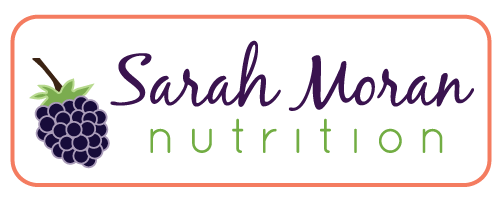Yes, you heard me right. But this isn't the typical pizza party you're thinking of with a delivery man knocking on your door and the post-pizza guilt after you've had one-too-many slices. Instead, imagine homemade 100% whole-wheat dough divided into individual portions, a simple sauce, and a toppings bar with something for every palate.

We hosted a "make-your-own" pizza party at my house recently and, needless to say, it was a big hit. We provided the dough, sauce, and mozzarella, along with our own personal toppings and our guests contributed any topping they liked. Whether you're hosting a party like ours or just making this as a fun family dinner, you won't be disappointed with the results.
Whole Wheat Pizza Dough
makes 5 personal pizzas
from Whole Grain Breads by Peter Reinhart
This process involves a delayed fermentation method that takes place over two days. You will start with two doughs, the "soaker" and the "biga." Later, these will be combined to make the final dough.
Soaker Ingredients
1 3/4 cups or 227 grams whole wheat flour
1/2 teaspoon or 4 grams salt
3/4 cup plus 2 tablespoons or 198 grams water
Soaker Directions
1. Mix all ingredients in a bowl by hand until a ball of dough forms and no dry spots remain, about 1 minute.
2. Cover loosely with plastic wrap and leave at room temperature for 12-24 hrs or refrigerate for up to 3 days (remove 2 hours before final mixing).
Biga Ingredients
1 3/4 cups or 227 grams whole wheat flour
1/4 teaspoon or 1 gram instant yeast
3/4 cups plus 2 tablespoons or 198 grams water at room temperature (70 °F)
Biga Directions
1. Mix all ingredients together in a bowl by hand until a ball forms. With wet hands, knead the dough in the bowl for 2 minutes, ensuring there are no dry spots and ingredients are mixed well. The dough should feel very tacky. Allow the dough to rest for 5 minutes, then knead with wet hands for an additional 1 minute. The dough will be smooth but still tacky.
2. Transfer dough to a clean bowl, cover tightly with plastic wrap, and refrigerate for 8 hrs-3days.
3. Remove from refrigerator about 2 hours before mixing final dough.
Final Dough Ingredients
Soaker
Biga
7 tablespoons or 56.5 grams whole wheat flour
5/8 teaspoon or 5 grams salt
1 1/2 teaspoons or 5 grams instant yeast
2 1/4 teaspoons or 14 grams honey
3 tablespoons olive oil
Final Dough Directions
1. On a lightly floured surface, use a metal pastry scraper to chop the "soaker" and "biga" into 12 pieces each (sprinkle  flour over the pre-doughs to prevent the pieces from sticking back together).
flour over the pre-doughs to prevent the pieces from sticking back together).
2. Using a stand mixer*, put the dough pieces in the bowl with the flour, salt, yeast, honey, and 2 tablespoons of olive oil. Mix with the paddle attachment on low-speed for 1 minute, or until the ingredients come together into a ball. Switch to the dough hook and mix on medium low-speed for 2 minutes, scraping down the sides as needed, until the dough is completely mixed. Add flour or water as needed until the dough is soft and slightly sticky.
*I prefer the stand mixer, but you can use your hands as well. Simply knead the dough with wet hands for 2 minutes, until all ingredients are evenly distributed.
3. Roll the dough on a lightly floured surface to coat., then knead by hand for 3-4 minutes, until the dough is soft and very tacky, verging on sticky. Form the dough into a ball and let it rest for 5 minutes. Meanwhile, line a sheet pan with parchment paper or silicon mat, then oil it with the remaining 1 tablespoon of olive oil.
4. Knead the dough for 1 minute to develop the gluten. It should be soft, supple, and very tacky, verging on sticky. Divide the dough into 5 equal pieces. Form each piece into a tight ball by flattening into a square, pulling the corners together, and pinching the seams closed (this side is the bottom). Roll the balls in the oil to coat the entire surface of each, then cover the pan loosely with plastic wrap. Allow to rise for 1 hour.
5. Preheat the oven to the highest temperature. If cooking on a pizza stone, allow it to preheat in oven for 1 hour while

the dough is rising. Otherwise, cook the pizzas on the underside of a sheet pan. Shape the pizza dough into your desired shape and then top with sauce and your favorite toppings. For the sauce recipe we used, click here.
6. Slide the topped pizzas onto the stone or baking sheet. Bake for 5-8 minutes.
7. Remove pizza from oven and transfer to cutting board. Allow pizza to rest for 3-5 minutes before slicing. However, if you're like us, you just might not be able to wait that long.
 Using whole grain flours in your cooking isn't as difficult as many people think. I have found, in most cases, that you can simply substitute in the whole grain version with great results! When it comes to wheat flour, use regular whole wheat flour in heartier products like bread and biscuits. If you're making a more delicate food, like waffles, cookies, or a cake, opt for whole wheat pastry flour. It's made from a softer wheat variety, giving the flour a softer texture. Also, be sure to store your flour in the refrigerator or freezer to keep it from spoiling, because whole grain flours are not as shelf stable as refined flours.
Using whole grain flours in your cooking isn't as difficult as many people think. I have found, in most cases, that you can simply substitute in the whole grain version with great results! When it comes to wheat flour, use regular whole wheat flour in heartier products like bread and biscuits. If you're making a more delicate food, like waffles, cookies, or a cake, opt for whole wheat pastry flour. It's made from a softer wheat variety, giving the flour a softer texture. Also, be sure to store your flour in the refrigerator or freezer to keep it from spoiling, because whole grain flours are not as shelf stable as refined flours.

 As I've mentioned
As I've mentioned 

 Many people turn to artificial sweeteners as a way to get healthier or lose weight, but I think this is a huge mistake. For one, it goes against my philosophy of eating whole foods as close to their natural state as possible and avoiding chemical, man-made ingredients, fillers, and add-ins. In addition, no matter what you think about the safety of artificial sweeteners, they send the wrong message about the way we should eat. What I mean by that is, when you turn to an artificial sweetener to "save calories" what you're really doing is continuing to operate within the same frame of mind as before, rather than changing it. You're perpetuating a diet that emphasizes sweet. What really needs to happen is to change your diet to contain less sugar and allow your taste buds to adjust. This does take some time (a couple weeks), but the result is a wholesome diet without being tied down by a sugar obsession.
One area I used to be dependent on artificial sweeteners was my yogurt. I always bought the low-calorie, artificially sweetened brands. Giving them up was a struggle because I just didn't see how I could eat yogurt without them. However, once I really got serious and dedicated, I was able to make the switch and I haven't looked back since. Now, I buy bulk tubs of plain yogurt instead. It's much cheaper than individual containers and I can flavor it however I like. Frozen berries and other fruits are a great option, but when I want to make my yogurt my whole breakfast, I use the recipe below.
Many people turn to artificial sweeteners as a way to get healthier or lose weight, but I think this is a huge mistake. For one, it goes against my philosophy of eating whole foods as close to their natural state as possible and avoiding chemical, man-made ingredients, fillers, and add-ins. In addition, no matter what you think about the safety of artificial sweeteners, they send the wrong message about the way we should eat. What I mean by that is, when you turn to an artificial sweetener to "save calories" what you're really doing is continuing to operate within the same frame of mind as before, rather than changing it. You're perpetuating a diet that emphasizes sweet. What really needs to happen is to change your diet to contain less sugar and allow your taste buds to adjust. This does take some time (a couple weeks), but the result is a wholesome diet without being tied down by a sugar obsession.
One area I used to be dependent on artificial sweeteners was my yogurt. I always bought the low-calorie, artificially sweetened brands. Giving them up was a struggle because I just didn't see how I could eat yogurt without them. However, once I really got serious and dedicated, I was able to make the switch and I haven't looked back since. Now, I buy bulk tubs of plain yogurt instead. It's much cheaper than individual containers and I can flavor it however I like. Frozen berries and other fruits are a great option, but when I want to make my yogurt my whole breakfast, I use the recipe below. Quitting soda is one of the quickest ways to improve your diet and your health. First off, they are basically sugar-water with a few chemicals thrown in and have no redeeming qualities at all. Second, your body doesn't register liquid calories as well as food calories, so it's not going to fill you up the way an equivalent amount of food would. Third, they push out other healthful beverages in your diet like water and tea. To add insult to injury, they are most often sweetened with high-fructose corn syrup which is highly processed and made from GMO corn. Also, while diet sodas may be calorie-free, they still are in no way healthy and, in my opinion, are just as dangerous as their full-calorie counterparts. Bottom line: the soda has got to go.
Quitting soda is one of the quickest ways to improve your diet and your health. First off, they are basically sugar-water with a few chemicals thrown in and have no redeeming qualities at all. Second, your body doesn't register liquid calories as well as food calories, so it's not going to fill you up the way an equivalent amount of food would. Third, they push out other healthful beverages in your diet like water and tea. To add insult to injury, they are most often sweetened with high-fructose corn syrup which is highly processed and made from GMO corn. Also, while diet sodas may be calorie-free, they still are in no way healthy and, in my opinion, are just as dangerous as their full-calorie counterparts. Bottom line: the soda has got to go. You've likely heard about the danger of trans fats on the news or seen products that proudly display "0 grams of trans fat per serving" on their packaging. But what are trans fats and how bad are they really? First, we need to start with a little chemistry. Fatty acids can either be saturated or unsaturated. These terms refer to the carbon-hydrogen bonds in the fatty acid chain. When a fatty acid is saturated, each carbon in the chain has the maximum number of bonds (4) while unsaturated means that there are less than 4 bonds, resulting in double bonds. So, saturated fats are holding all of the hydrogen they can and unsaturated fats are not. These differences impact the structure of the fat and, therefore, the way it is processed in the body. Trans fats occur when the hydrogens in an unsaturated fat are across from each other rather than next to each other. While this does occur naturally in minimal amounts, the man-made kinds are the ones that have been found to be harmful. In fact, research published in the New England Journal of Medicine has shown that a 2% increase in calories from trans fat increases your risk of heart disease by 23%!
You've likely heard about the danger of trans fats on the news or seen products that proudly display "0 grams of trans fat per serving" on their packaging. But what are trans fats and how bad are they really? First, we need to start with a little chemistry. Fatty acids can either be saturated or unsaturated. These terms refer to the carbon-hydrogen bonds in the fatty acid chain. When a fatty acid is saturated, each carbon in the chain has the maximum number of bonds (4) while unsaturated means that there are less than 4 bonds, resulting in double bonds. So, saturated fats are holding all of the hydrogen they can and unsaturated fats are not. These differences impact the structure of the fat and, therefore, the way it is processed in the body. Trans fats occur when the hydrogens in an unsaturated fat are across from each other rather than next to each other. While this does occur naturally in minimal amounts, the man-made kinds are the ones that have been found to be harmful. In fact, research published in the New England Journal of Medicine has shown that a 2% increase in calories from trans fat increases your risk of heart disease by 23%!
 flour over the pre-doughs to prevent the pieces from sticking back together).
flour over the pre-doughs to prevent the pieces from sticking back together).

















 using those odds and ends that we pay for but throw in the trash or compost every day such as carrot and celery ends, mushroom stems, the woody pieces of asparagus, fennel fronds, onions peels, and the leftover carcass from a whole chicken. These little bits are full of flavor and nutrition and can be used to make a great vegetable or chicken stock that can be frozen and then thawed to use in recipes or in place of water to cook brown rice, couscous, and quinoa. It's as simple as keeping a bag in the freezer to store all of those little veggie pieces and, when it's full, simmering the contents in a big pot of water. The recipe below is a good jumping off point, but feel free to make adjustments depending on what you have on hand or what's in your bag of frozen veggies. This is not an exact science so use what you like and have fun with it! Not only will you be getting the most out of the dollars you do spend, you won't have to waste money on all of those boxed stocks at the store (which are often times loaded with sodium) and you can control the quality of the ingredients. One guideline is not to use cruciferous vegetables (broccoli, cauliflower, cabbage, brussels sprouts, etc.) as they can make things a bit stinky and dominate the flavor of the stock.
using those odds and ends that we pay for but throw in the trash or compost every day such as carrot and celery ends, mushroom stems, the woody pieces of asparagus, fennel fronds, onions peels, and the leftover carcass from a whole chicken. These little bits are full of flavor and nutrition and can be used to make a great vegetable or chicken stock that can be frozen and then thawed to use in recipes or in place of water to cook brown rice, couscous, and quinoa. It's as simple as keeping a bag in the freezer to store all of those little veggie pieces and, when it's full, simmering the contents in a big pot of water. The recipe below is a good jumping off point, but feel free to make adjustments depending on what you have on hand or what's in your bag of frozen veggies. This is not an exact science so use what you like and have fun with it! Not only will you be getting the most out of the dollars you do spend, you won't have to waste money on all of those boxed stocks at the store (which are often times loaded with sodium) and you can control the quality of the ingredients. One guideline is not to use cruciferous vegetables (broccoli, cauliflower, cabbage, brussels sprouts, etc.) as they can make things a bit stinky and dominate the flavor of the stock.
